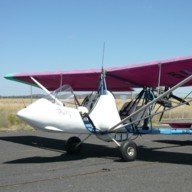This is a great post Pioneer.
I have had two total engine failures in flight and a few manageable ones. To keep with your questions I have answered them as you have asked.
The first was a sudden shutdown on a long cross country flight that was possibly caused by carby ice but I am not sure and the other was during cattle mustering.
1. Were you at a manageable height to carry out the forced landing? Less than 300 feet AGL while mustering but manageable for the operation. I had a cleared lane area between to very large electrified fences to land and there was no way that I was going to hit one - believe me!:black_eye::black_eye:
2. Were you flying over landable terrain? Mostly, mustering operations do require operations over undesirable terrain but carefull planning should take this into account
3. What plane were you flying? Drifter with 582 Rotax
4. What engine/what happened to the engine? The main shaft input bearing on the gearbox failed. This had happened once before and is why I am not a big fan of gear drive engines
5. Would you have done something differently? Yep, fitted a Jabiru and ban all two strokes!!!:big_grin::big_grin:
On another thought, I wish that instructors who turn ignitions off would really think about what they are doing. You are increasing the risk of exposing people to dangerous situations that may or may not turn out successful. If the exercise turns into an accident, who is responsible?? In this day and age, who pays for your mistake?
From a commercial point of view, if you scare the student and they do not come back, what have you gained? Bugger all! The grape vine could well work against you in that case and cause both your school (read income) and our organisation to lose members. My thoughts entirely but it would be damned hard to live with a death or permanent injury on your conscience so why do it?
Engine failures are infrequent but good instructors can find better ways of teaching engine failure beside switching the ignition off and exposing you to a possible non restart.thumb_down



